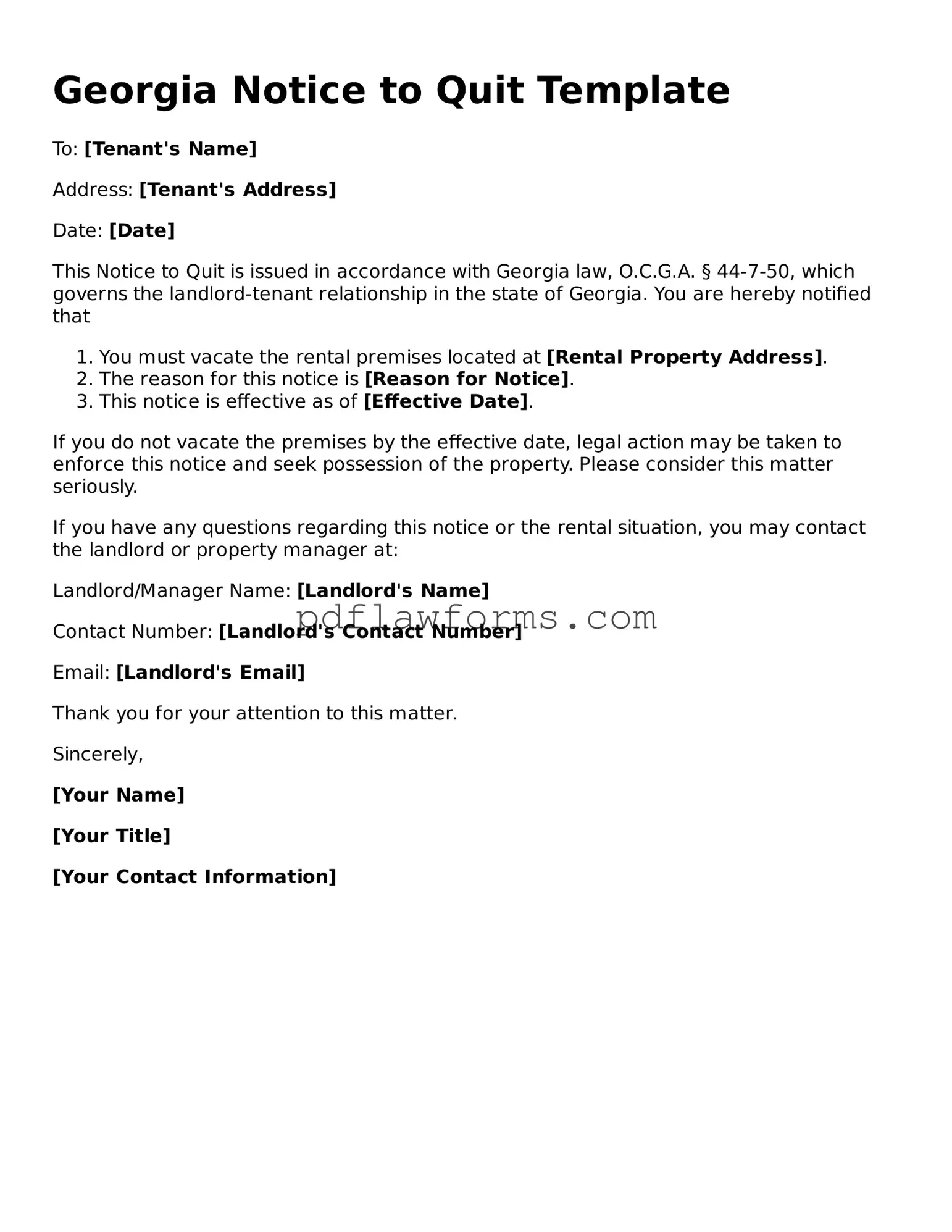Filling out the Georgia Notice to Quit form can be a straightforward process, but mistakes can lead to delays or complications. One common error is failing to include the correct date. The date is crucial as it marks the beginning of the notice period. Without it, the recipient may not understand when the notice takes effect.
Another frequent mistake is not providing the full name of the tenant. Using abbreviations or nicknames can create confusion. It is essential to ensure that the tenant's name matches the one on the lease agreement. This helps to avoid any disputes regarding the identity of the tenant.
People sometimes neglect to include the complete address of the rental property. Omitting this information can lead to uncertainty about which property the notice pertains to. It is important to write the address clearly, including any apartment or unit numbers.
Some individuals mistakenly assume that a verbal notice is sufficient. However, the Notice to Quit form must be in writing to be legally valid. Relying on a conversation can result in misunderstandings and may not hold up in legal situations.
Another error involves not specifying the reason for the notice. While it is not always required, providing a reason can clarify the situation for the tenant. This transparency can help foster better communication and understanding between both parties.
People may also forget to sign the form. A signature is essential as it verifies that the notice is legitimate and that the sender has the authority to issue it. Without a signature, the notice may be considered invalid.
Additionally, failing to deliver the notice properly is a common mistake. Simply handing it to the tenant or leaving it at the property may not meet legal requirements. It is advisable to use certified mail or another method that provides proof of delivery.
Some individuals do not keep a copy of the completed Notice to Quit. Retaining a copy is important for personal records and can serve as evidence if any disputes arise later. It is wise to document all correspondence related to the notice.
Another mistake is using outdated forms. Laws and regulations can change, so it is crucial to ensure that the form being used is the most current version. Using an outdated form may lead to noncompliance with legal standards.
Lastly, people sometimes rush through the process, leading to careless errors. Taking the time to review the form thoroughly can help catch mistakes before submission. A careful approach can prevent complications and ensure that the notice is effective.
